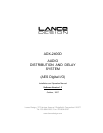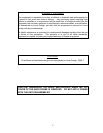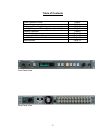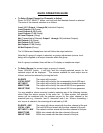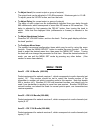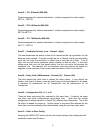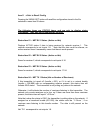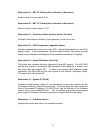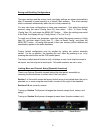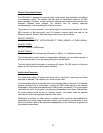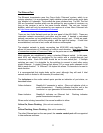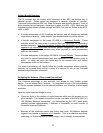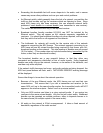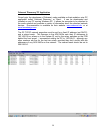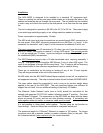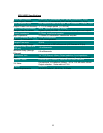
13
Exceeding this bandwidth limit will cause dropouts in the audio, and in severe
cases may cause other problems such as sync and control problems.
An Ethernet switch, which generally forms the hub of a network, can partition the
traffic so that bundles only go the receivers which are listening to them. Since
each ADX frame only has three receivers, this can eliminate network traffic
problems if each bundle is a unicast bundle (one transmitter to one receiver).
The switch will route the traffic only to the required receiver.
Broadcast bundles (bundle numbers 001-255) can NOT be isolated by the
Ethernet switch. They will appear on ALL network segments, regardless of
receivers. You should use broadcast bundles only when required, and be aware
that they add to the traffic on all segments of the network.
The bottleneck for network will usually be the receive side of the network
segments connecting the ADX frames. The network segment connecting to an
ADX frame will see all unicast bundles being received by that frame, plus ALL
broadcast bundles on the network. This total number of bundles can not exceed
10 (9 is better). (This number does not include bundles being transmitted by this
frame, unless they are broadcast bundles).
The broadcast bundles are a very powerful feature, in that they allow very
convenient and inexpensive distribution of lots of audio signals. Using broadcast
bundles can really clog up the network, however, so be aware of the tradeoffs, and
use them only when required.
If the network traffic becomes too heavy, and audio packets are being dropped, the
ADX front panel buttons will flash, and a “NETWORK ERRORS“ warning message
will be displayed.
Some other things to know about the network operation:
Because of the way Ethernet works, the ADX frames can not see their own
transmissions. This means that if you dial a transmitter and receiver (in the
same ADX unit) up to the same bundle number, the transmitted audio will NOT
appear on the receiver outputs. Select ‘local’ as a source instead.
Only one ADX receiver can listen to a given unicast bundle. If you assign two
receivers to the same unicast bundle, only the first will output audio. Broadcast
bundles can be repeated on multiple receivers, either in separate frames or in
the same frame (for multiple copies of the same audio).
All audio on the network is 20-bit uncompressed. It takes a fixed amount of
bandwidth, regardless of the audio content.



